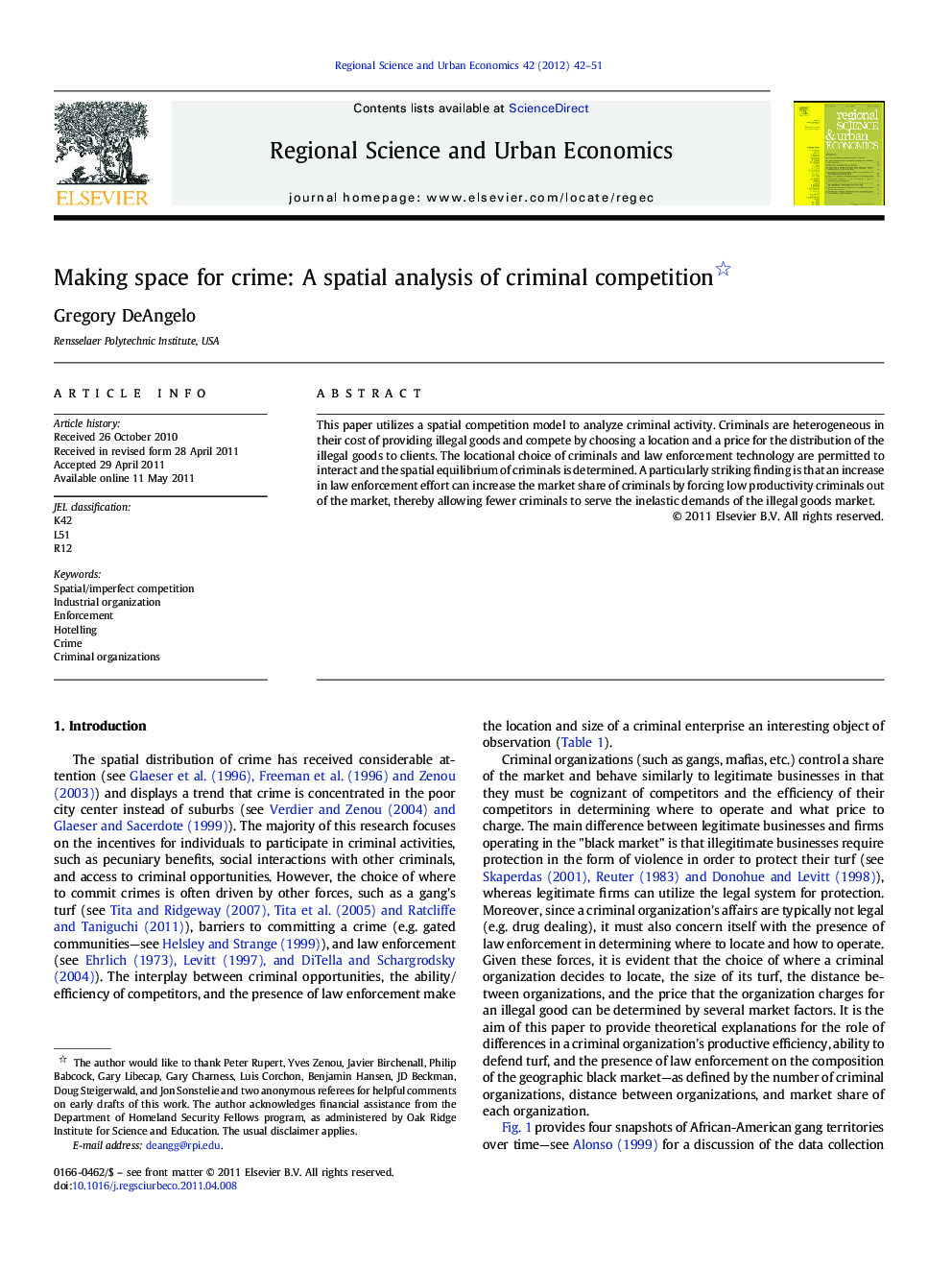| Article ID | Journal | Published Year | Pages | File Type |
|---|---|---|---|---|
| 981100 | Regional Science and Urban Economics | 2012 | 10 Pages |
This paper utilizes a spatial competition model to analyze criminal activity. Criminals are heterogeneous in their cost of providing illegal goods and compete by choosing a location and a price for the distribution of the illegal goods to clients. The locational choice of criminals and law enforcement technology are permitted to interact and the spatial equilibrium of criminals is determined. A particularly striking finding is that an increase in law enforcement effort can increase the market share of criminals by forcing low productivity criminals out of the market, thereby allowing fewer criminals to serve the inelastic demands of the illegal goods market.
Research highlights► This research provides a spatial analysis of criminal competition ► We examine the role of space in differentiating one criminal's product (e.g. drugs) from another ► We find that low (high) productivity criminals will be spatially congested (isolated) ► Police enforcement efforts to reduce criminals can lead to increases in criminals/criminal profits
